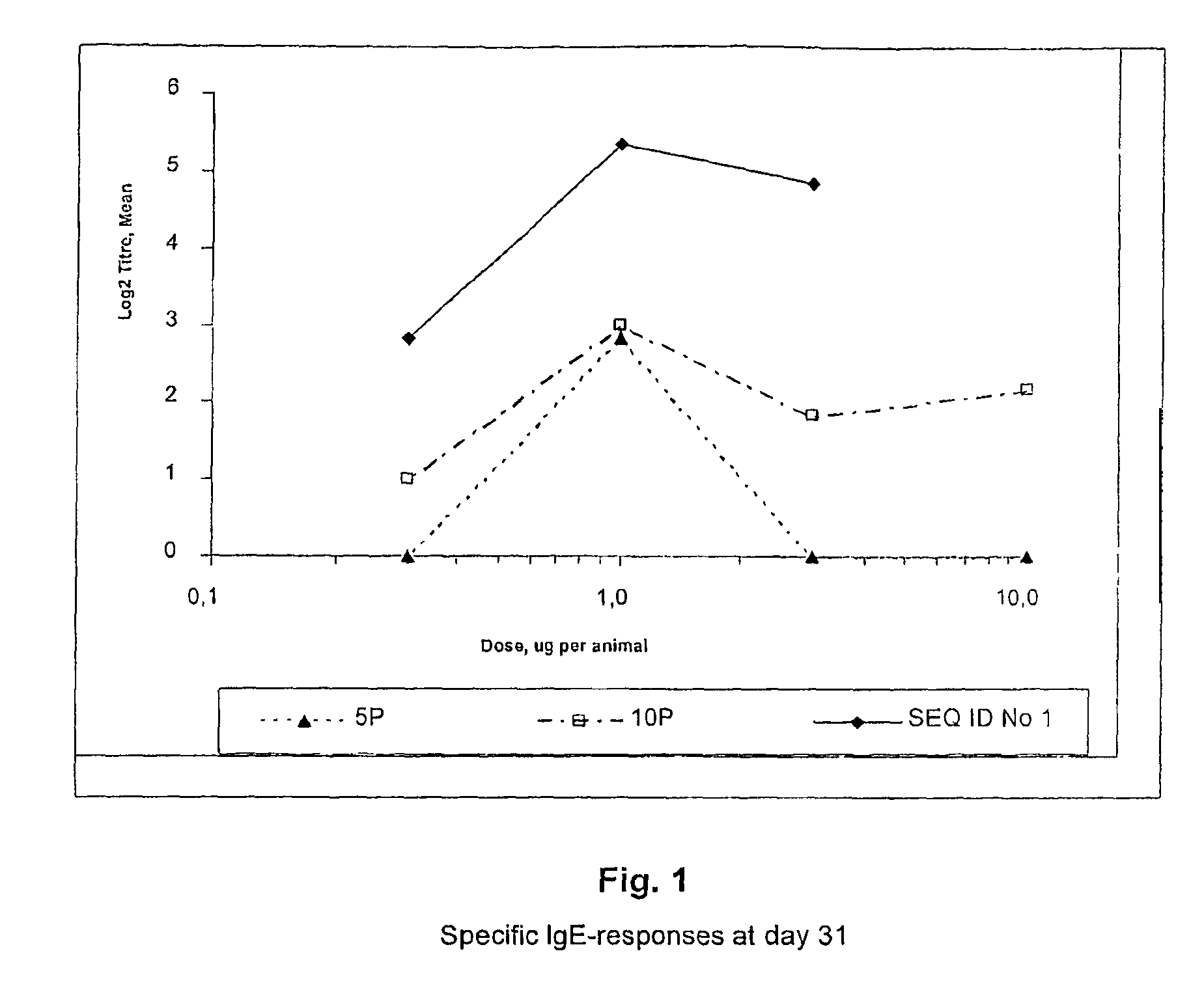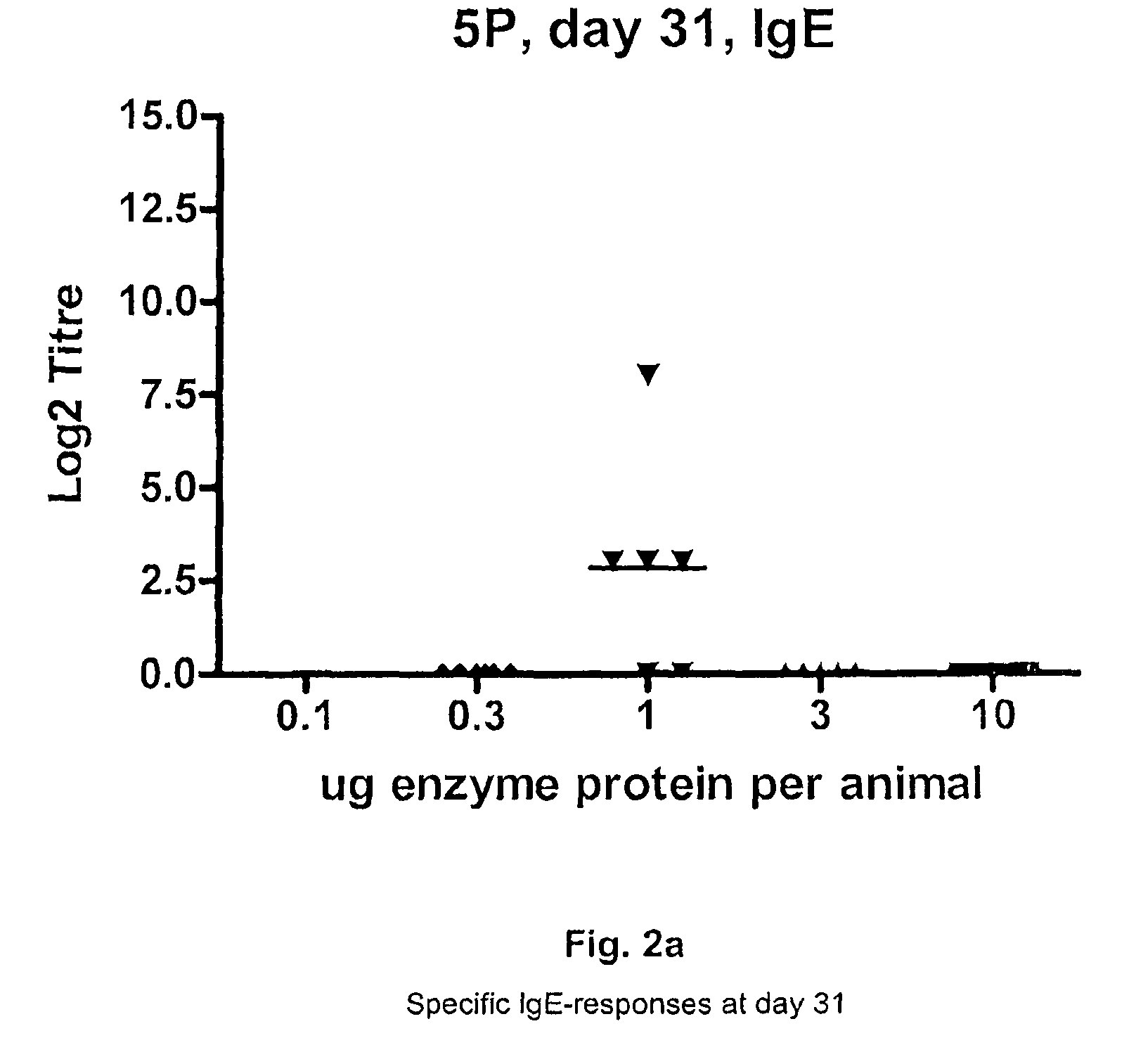Subtilase variants having altered lmmunogenicity
a technology of subtilase and immunogenicity, applied in the field of subtilase variants having altered immunogenicity, can solve the problems of epitope loss and reduced importan
- Summary
- Abstract
- Description
- Claims
- Application Information
AI Technical Summary
Benefits of technology
Problems solved by technology
Method used
Image
Examples
example 1
Identification of Epitopes in Savinase
[0206]A high diversity library of phages expressing random oligomeric peptides (hexa, hepta, octa, nona and / or dodeca peptides) as part of their surface proteins, were screened for their capacity to bind antibodies. The phage libraries were obtained from Schafer-N, Copenhagen, Denmark and New England Biolabs Inc, UK.
[0207]Antibody samples were raised in animals (Rat, Rabbits or Mice) by parenteral or mucosal administration of each of the proteins listed below. The antibodies were dissolved in phosphate buffered saline (PBS). In some cases, antibodies of specific subclasses were purified from the serum of immunised animals by capryilic acid precipitation (for total IgG) or by affinity chromatography using paramagnetic immunobeads (Dynal AS) loaded with subtype-specific antibody (purification of IgG1, IgG4, IgE) or target protein, e.g. Bacillus lentus protease (Savinase™), for the isolation of target specific Rat IgG, Mouse IgG, Mouse IgE, and Rab...
example 2
Library Construction
[0228]Applying the procedure outlined in Example 1 above, the subtilase variants may be obtained by mutagenesis of the corresponding nucleic acid sequences as described in for example Sambrook et al. (1989), Molecular Cloning. A Laboratory Manual, Cold Spring Harbour, N.Y.).
example 3
Cloning and Expression of Subtilase Variants
[0229]Variants of the invention comprising specific insertions / deletions / substitutions are made by traditional cloning of DNA fragments (Sambrook et al., Molecular Cloning: A Laboratory Manual, 2nd Ed., Cold Spring Harbor, 1989) produced by PCR with oligos containing the desired mutations.
[0230]The template plasmid DNA may be pSX222, or an analogue of this containing a variant of the enzyme in SEQ ID NO 1. Mutations are introduced by oligo directed mutagenesis to the construction of variants.
[0231]The variants are transformed into E. coli. DNA purified from an over night culture of these transformants is transformed into B. subtilis by restriction endonuclease digestion, purification of DNA fragments, ligation, transformation of B. subtilis. Transformation of B. subtilis is performed as described by Dubnau et al., 1971, J. Mol. Biol. 56, pp. 209-221.
Site-Directed Mutagenesis in Order to Introduce Mutations in a Specific Region:
[0232]The ov...
PUM
| Property | Measurement | Unit |
|---|---|---|
| distance | aaaaa | aaaaa |
| temperature | aaaaa | aaaaa |
| pH | aaaaa | aaaaa |
Abstract
Description
Claims
Application Information
 Login to View More
Login to View More - R&D
- Intellectual Property
- Life Sciences
- Materials
- Tech Scout
- Unparalleled Data Quality
- Higher Quality Content
- 60% Fewer Hallucinations
Browse by: Latest US Patents, China's latest patents, Technical Efficacy Thesaurus, Application Domain, Technology Topic, Popular Technical Reports.
© 2025 PatSnap. All rights reserved.Legal|Privacy policy|Modern Slavery Act Transparency Statement|Sitemap|About US| Contact US: help@patsnap.com



